Three people were injured after a sinkhole swallowed a car on Xi’erqi Road in Haidian District Tuesday night. It happened less than 48 hours after a separate hole opened on the west side of North Third Ring Road, which caused heavy traffic during rush hour.
The Beijing drainage group said the reason for Tuesday night’s sinkhole was the accumulation of rain under the street over the past summer, causing the ground to cave in.
The rescue effort can be seen here, while the tragic-comedy of a man yelling down a hole can be seen here.
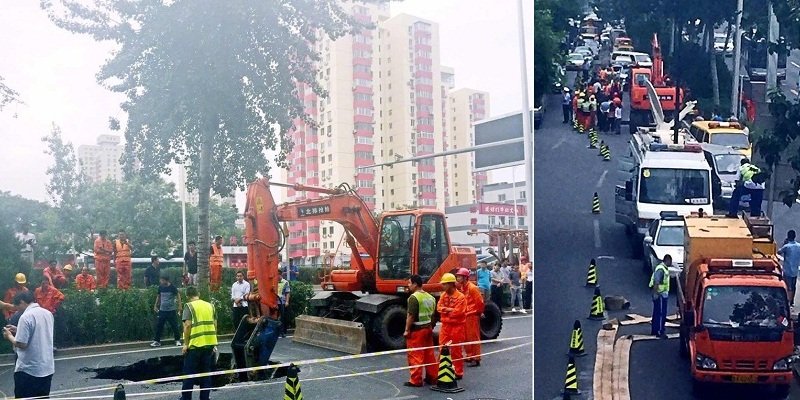
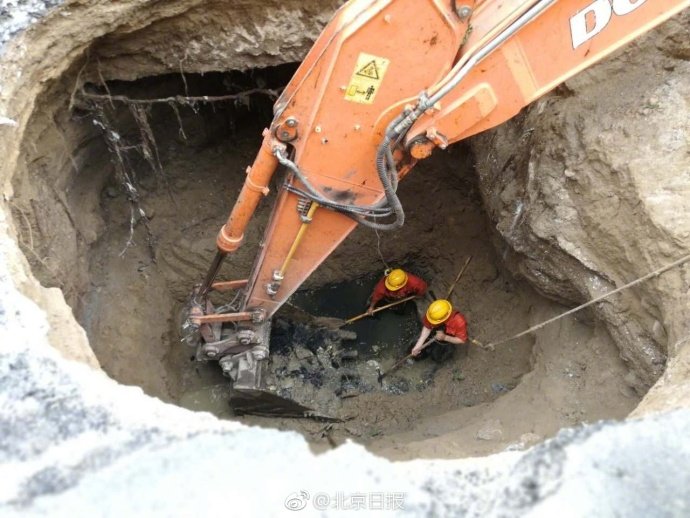

Sinkholes remain a constant problem in the city, and it may get a lot worse. In 2015, a hole suddenly appeared and nearly devoured a parked car in Beijing’s Fengtai District (shown below), while a 25-meter-wide sinkhole that opened up at a construction site for the Beijing Metro Line 14 led to attempts to bribe a local reporter not to write about it.
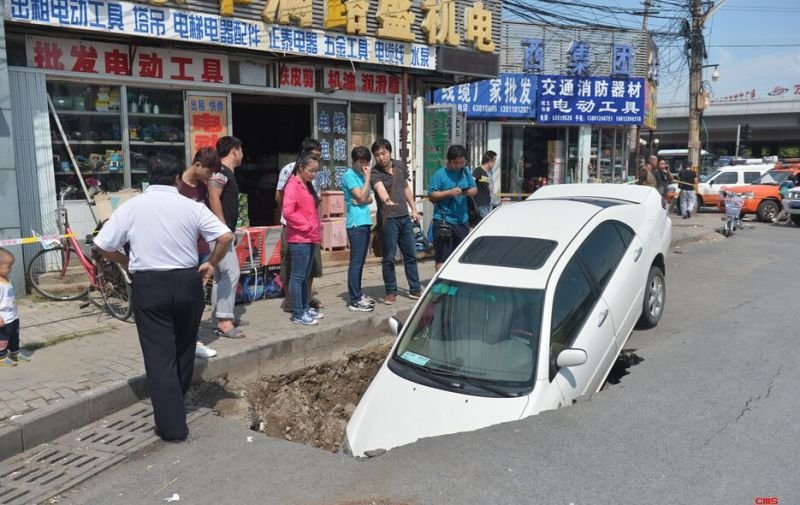
In 2014, a massive five-meter-wide sinkhole opened up in the Fuhuajia neighborhood in Chaoyang while a sinkhole measuring some 20 meters in diameter shut down Guangqu Road in Shuangjing.
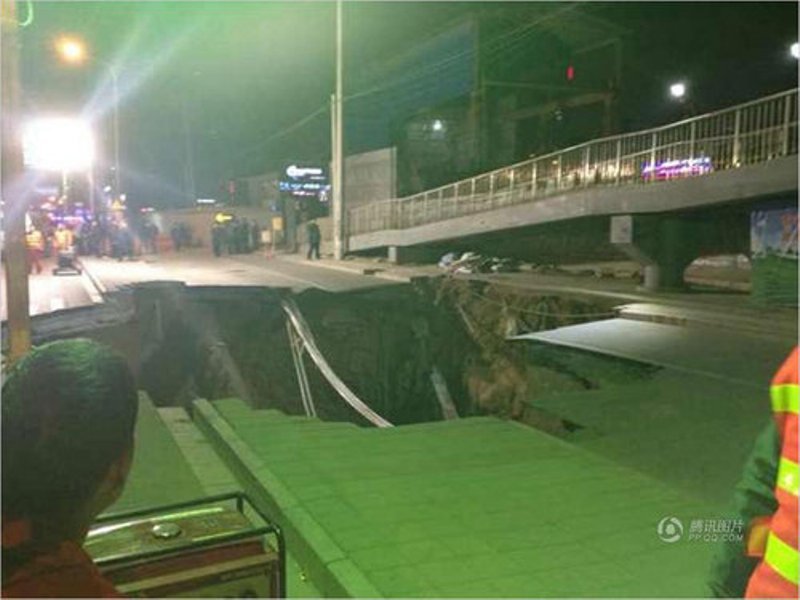
Things became so bad that sinkholes were responsible for swallowing an entire truck in 2011 as well as four pedestrians in Beijing’s Xicheng District in 2012 (shown below), killing one.
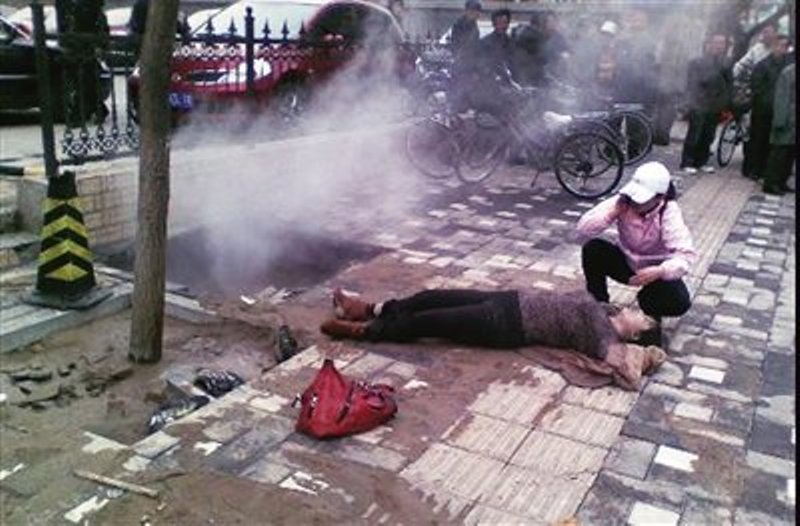
These sinkholes could be caused by any number of reasons like illegal digging, subway construction, pedestrians like in Xicheng, or broken heating pipes. But whatever the reason, the phenomenon of sinkholes in Beijing should be a daily reminder to us all that the entire city is sinking – literally – at a rate of 11 centimeters per year.
The problem lies with the city’s reliance on extracting groundwater for drinking, estimated at 3.5 billion cubic meters each year. With the soil crumbling away from the city’s foundations, cracks have appeared throughout the city such as this one measure at 800 meters wide and 25 kilometers long that was considered a threat to the Beijing Capital International Airport in 1998.
The city has since tried to wean itself off the use of local wells, and instead utilizing the “South-North Water Transfer Project” to bring water to country’s arid northern areas.
But, if you’re still worried about holes, you can be reassured that the city is addressing the issue. In 2013, the city set up 1,000 safety nets to catch anyone unlucky enough to fall down any one of its open holes.
Photos: NetEase, CSein, China Radio International, QQ News
This is an updated version of the story that first appeared on our sister site, the Beijinger. See more stories from this author here.
Twitter: @Sinopath
E-mail: charlesliu1@qq.com

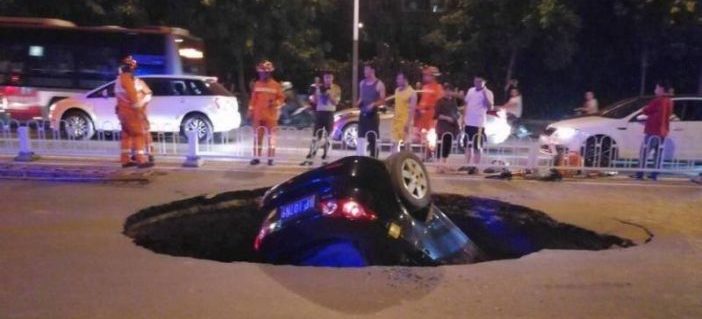
Meanwhile, the three-meter crack that opened on Monday morning happened at an auxiliary road just west of Dazhongsi Station on Line 13. The Beijing drainage group sent out emergency vehicles and personnel to fix the hole. It said the sinkhole was caused by a damaged sewage pipe, 6 meters below the surface, adding that some of the pipes in the area constitute a “hidden danger.”